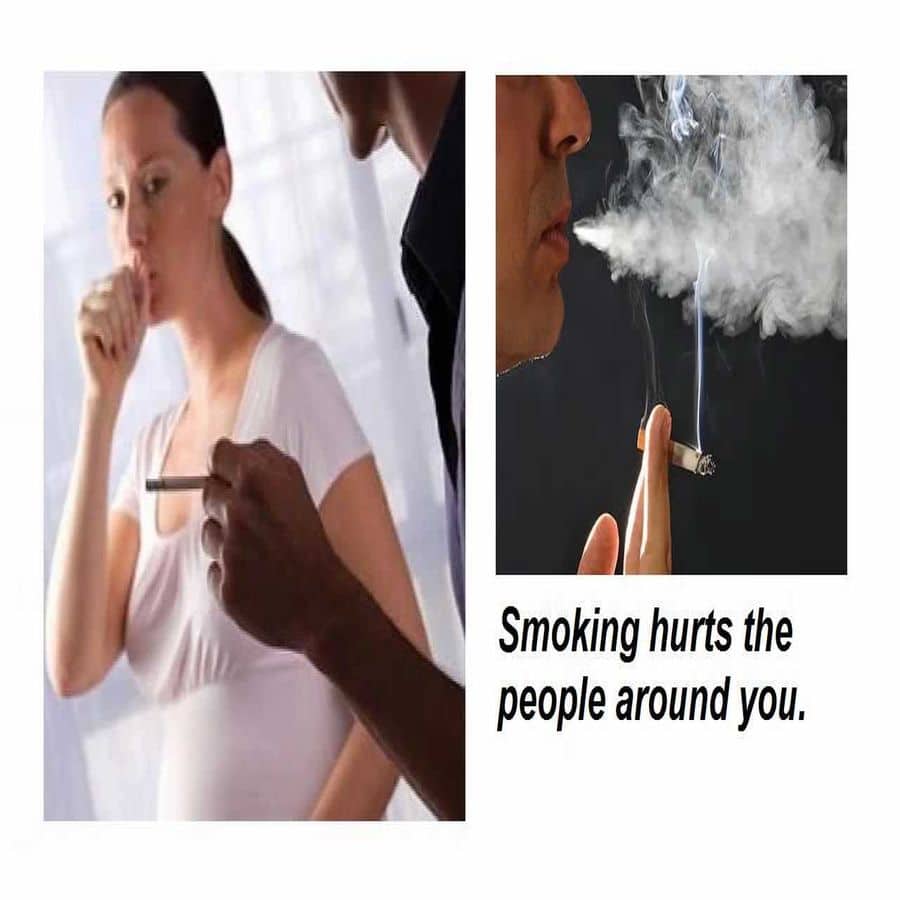Negative Effects of Second Hand Cigarette Smoke


There is a growing amount of scientific evidence, which covers everything from research on the molecular level to covering whole communities around the world, which refutes that secondhand smoke contributes to disease. Tobacco is the cause of over 90% of deaths associated with lung cancer. However, it is important to note that the Centers for Disease Control and Prevention has also documented over 50,000 deaths every year that is also connected to secondhand smoke. In 2006, the Surgeon General reported that heart disease and lung cancer in non-smoking adults is also attributed to secondhand smoke. In children, sudden infant death syndrome, asthma, and other respiratory infections can be linked back to passive smoking.
In 2011, researchers at the University of California, Los Angeles, investigated how the human brain is affected by secondhand smoke. The latest imaging techniques were used to highlight the instances when nicotine was present in the brain. Twenty four young adults which consisted of eleven adults that were regular smokers and also thirteen non-smokers were a part of the study. They were given a special imaging tracer as they road as a passenger in a car for over an hour. The participants were exposed to secondhand smoke during the first session and in the second session, they did not have any smoke in the vehicle. After each session, the scientists’ monitored their brain activity using PET scans.
The scientists discovered that up to 20% of the participant’s brains were covered by nicotine after they were exposed to secondhand smoke for more than an hour.
Children are especially detrimentally exposed to secondhand smoke since they have no way to combat it or seek alternative environments. In the January 2015 issue of Pediatric Pulmonology, scientists documented the negative effects that children with cystic fibrosis have associated with secondhand smoke. From 2008 to 2012, 75 infants with cystic fibrosis were monitored. Chest imaging, lung capacity, and other characteristics were observed between four and twelve months of secondhand smoke exposure versus those that did not have exposure to secondhand smoke. The outcome does not come as a surprise that the ones associated with secondhand smoke exposure had increased bronchodilator responsiveness and air trapping. There was also anaerobic growth throughout the respiratory system. These researchers concluded that those children with cystic fibrosis in combination with exposure to secondhand smoke were associated with increased bacteria within their systems. Having strong documentation from this study gave further evidence to promote immediate interventions from cigarette smoking for all parents involved.

What Effects Does Secondhand Smoke Have on Tumor Growth?
The Center for Tobacco Control Research and Education at UC San Francisco conducted a study in 2008 to answer this question. Scientists used five groups of nine mice and split them up and either a cleanroom air environment or secondhand smoke environment for seventeen days. Tumor sizes increased as well as weight for those mice that were in the secondhand smoke environment while there was zero impact for those that were in the cleanroom air environment. The revelation after the study was that the capillary density had increased to almost twice as much in the rodents that had exposure to secondhand smoke. Therefore, they concluded that excessive secondhand smoke causes additional weight gain as well as larger tumors in mice.
Also in 2008, the periodical Lung Cancer measured secondhand smoke as it relates to when a person had exposure and the associated lung cancer risk. Since a person’s lungs continue to grow until adulthood, scientists wanted to test whether a person increases the risk of lung cancer when they are younger and their lungs are still developing versus a person that received exposure to secondhand smoke after the age of twenty-five.
The three environments that were studied were when a person was at home, at work or during their leisure time. The population in the study covered over 1600 cases in which 1200 were in a control group. The variable of the most importance was when a person was initially exposed to secondhand smoke. The participants that were exposed to secondhand smoke at work and in their leisure time had greater exposure and increased their odds for lung cancer for the group under the age of twenty-five. They concluded that everyone has a higher risk of lung cancer when they are exposed to secondhand smoke. It is important to note that the study highlighted that individuals that are exposed to secondhand smoke before the age of twenty-five have an increased chance of getting lung cancer versus those that were exposed to secondhand smoke after the age of 25.
Secondhand smoke raises the danger of coronary heart problems. This impact is bigger than traditionally thought when compared to the threats that are traditionally associated with active cigarette smokers.


